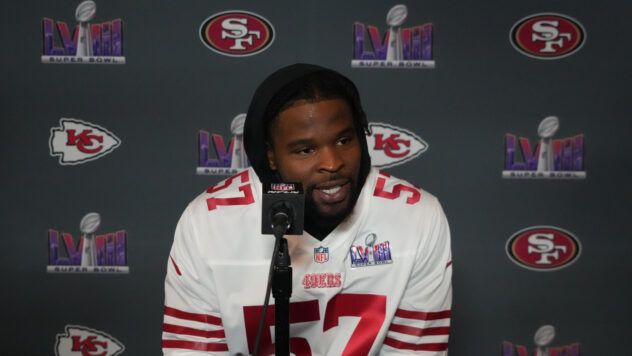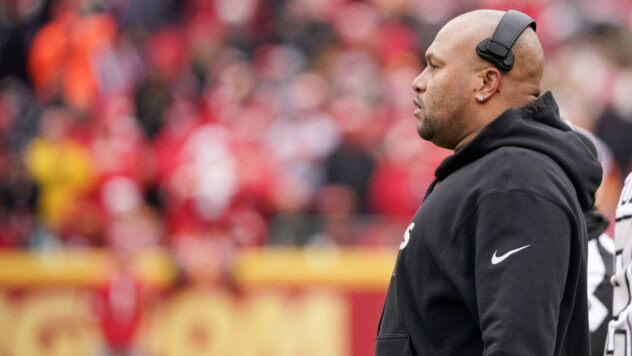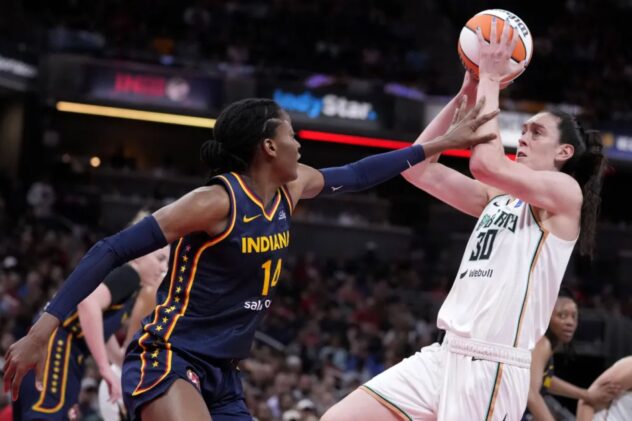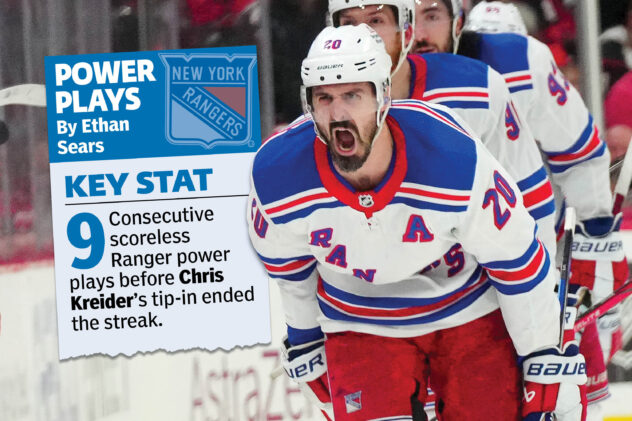Week 10 NFL Turning Point: Packers Run Game Levels Field Against Cowboys on Final TD Drive

The Green Bay Packers aren’t having the season they’d hoped for coming off their third straight 13-win season. The passing attack has been lackluster, and offensive line inconsistencies have hurt the run game. However, in Week 10, the rushing attack helped neutralize the Dallas Cowboys‘ defense, whose strength is their pass rush.
On the Packers’ final touchdown drive, they had two 15+ yard runs, taking advantage of versatility in their run scheme and the inadequacies of Dallas’ run defense. The other theme was using Christian Watson’s speed as a weapon, which Green Bay used well all game.
We’ll run through the seven most important plays from the Packer’s 10-play touchdown drive that tied the game late in the fourth quarter.
Green Bay Packers’ Run Game
Green Bay was outstanding all game. Aaron Jones generated 0.23 EPA per play, and AJ Dillon was just positive at 0.01, according to rbsdm.com‘s box score. There was an interesting split to things based on down, however.
The Packers generated -0.19 EPA per play on first down and just 2.61 yards per carry throughout the course of the game, according to TruMedia‘s EPA model. They blitzed the Cowboys on second down, generating 0.40 EPA on second-down runs, carrying it 17 times for 144 yards and their one rushing touchdown in the game. Green Bay attempted four third-down runs and picked up a first down on three of them.
The final drive saw runs of six, two, 17, four, 23, and two yards.
Play 1: Pin-Pull for Six Yards
The pin-and-pull has made outside zone even better in recent days. It’s interesting to see how the blocks were distributed on the left side of the offensive line here. Instead of having David Bakhtiari pull, he and the tight ends seal the three Cowboys defenders inside, allowing Elgton Jenkins and Josh Myers to get around the edge and lead for Jones.
The down blocks leave Trevon Diggs on an island to defend outside, and if Dorance Armstrong doesn’t make a nice play to rip outside of Marcedes Lewis, this could have been an even bigger gain on first down.
Play 2: Third-Down Conversion
What do you do when you have a young wide receiver who isn’t a great route runner but is unbelievably fast? You ask them to bend, not break.
Watson will live on crossing patterns and vertical shots early in his NFL career, as he does on this drive.
Dallas actually defends this incredibly well. Diggs calls the under and picks up the route coming from the opposite side on this bastardized version of mesh that looks to get Lewis in the way of Leighton Vander Esch, which works just well enough to get the ball to Watson past the sticks.
Play 3: RPO Swing
It doesn’t get much easier than this on first down. Green Bay puts Josiah Deguara in motion and runs wide zone away. Dallas doesn’t shift the defense toward the formation strength, which gives the Packers positive numbers on that side. Once Jayron Kearse shades inside on the run action, it was all over.
Honestly, he’s lucky Robert Tonyan peeled back inside to block him, because if he’d gotten north and blocked Malik Hooker, Allen Lazard may still be running (that’s not true because Micah Parsons was in pursuit).
Play 4: Kids, Do Your Squats
Dallas is learning that having speed on the defensive line is awesome, but when an offensive line can double team and climb to the second level, that speed comes at a cost. The Packers’ run game has the ability to move between man and zone schemes with both Jones and Dillon.
Dillon does a nice job pressing the line of scrimmage in the B gap before jump-cutting and exploding north to beat Vander Esch to the hole. On the opposite side, Parsons makes an oopsie by not trying to climb into the A gap as Quinton Bohanna gets shoved into oblivion by the double team. That created the run lane.
The rest was just the “Quadfather” taking what probably felt like a pebble to the left thigh as he bounced off Hooker on his way to a 17-yard run.
Play 5: Better Lucky Than Good
If Demarcus Lawrence wasn’t so damn good at football, this run might get back to the line of scrimmage. But he so thoroughly dominates Tonyan at the line that Jones cuts into the tight end, who was shoved into the backfield.
Carlos Watkins goes rumblin’, bumblin’, stumblin’ past the back, who has a mid-run epiphany to spin and run to the opposite sideline. Because Parsons is playing linebacker and not defensive end, he’s stuck carrying the motion man on the wheel route, which takes Dallas’s best player out of the run fit.
The defense overpursues, and Jones beats Kelvin Joseph to the edge. Joseph makes a nice play to punch the ball out, but it pops right back into the running back’s arms.
Play 6: The Dig Is Always Open on Dagger
Losing Anthony Brown is an underrated loss for Dallas. The Cowboys played a lot of Cover 1 against Green Bay, and it bit them consistently. Here, the outside leverage from Joseph makes carrying the receiver’s hip on an in-breaking route difficult.
To make matters worse, Parsons is playing in a hook zone, something he’s not overly comfortable doing, given his role reversal from hybrid player to primarily playing on the edge in 2022. He only has 60 coverage snaps through nine games. Aaron Rodgers took advantage with some eye manipulation, opening a window for the “dig” route.
The vertical takes care of Hooker, who is playing the center field role. But the protection is what allows this play to happen.
Play 7: Speed Kills
It really is that simple. Dallas is again playing man coverage with outside leverage, and it’s up to Rodgers to choose between the crossing route and the slant from Lazard.
The funny thing is Rodgers had a two-way go here. Lazard isn’t OPEN open, but he is NFL open, especially for someone with Rodgers’ precision. But Watson runs like Justify and gallops away from both cornerback and safety.
Watson’s speed and the Packers’ run game thwarted Dallas’s defensive efforts in the fourth quarter during their comeback.
















